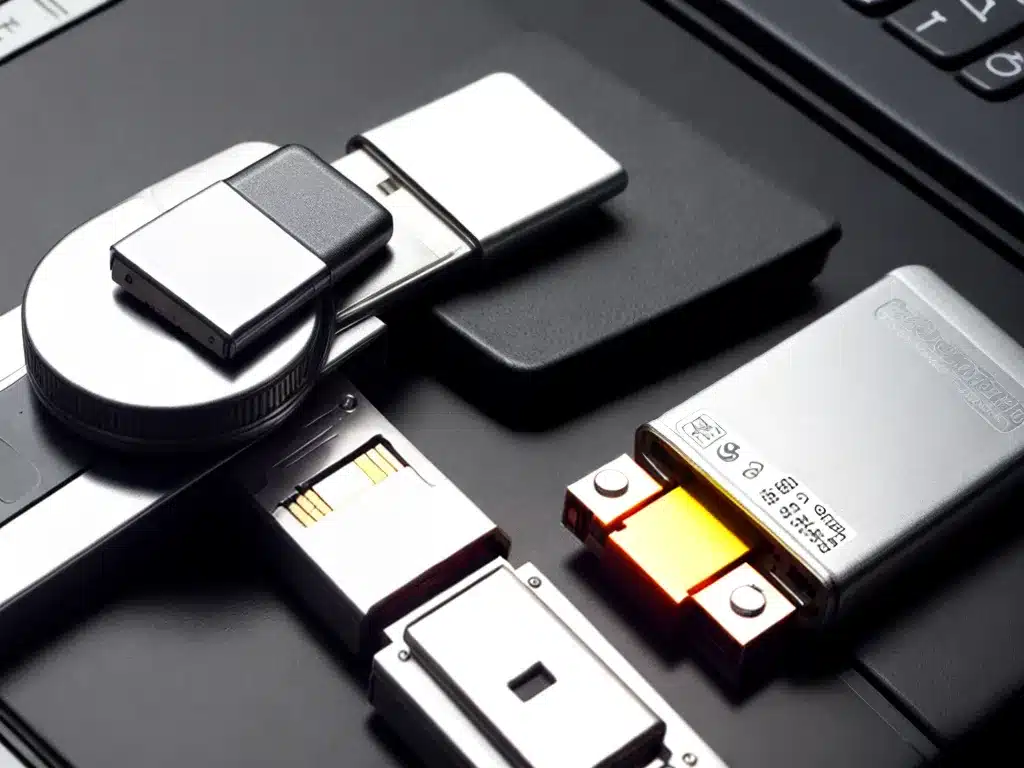Losing important files stored on a flash drive can be incredibly frustrating. When the flash drive becomes unresponsive and refuses to be detected by your computer, recovering the lost data may seem impossible. However, with the right tools and techniques, there is still hope for rescuing your precious photos, documents and other data from the unresponsive drive.
Diagnosing The Issue
The first step is to diagnose why the flash drive is not being recognized. Here are some of the most common reasons a flash drive can become unresponsive:
-
Corrupted File System: The file system responsible for organizing and reading data on the drive has become corrupted. This prevents the operating system from detecting the drive properly.
-
Improper Removal: If the flash drive was removed from a computer without properly ejecting it first, critical drive components can become corrupted.
-
Physical Damage: Dropping the flash drive or exposing it to liquids can physically damage the drive and its components. This can prevent proper function.
-
Virus Infection: Viruses or malware infecting the flash drive can sometimes damage critical drive components needed for proper function.
-
Outdated Drivers: Using outdated USB drivers on your computer can sometimes cause issues with recognizing the flash drive.
-
Drive Failure: Like any electronic storage medium, flash drives can sometimes fail due to old age or defects. This will lead to an unresponsive drive.
Understanding the root cause of the issue will help guide the process of data recovery later on.
Checking For Signs Of Life
Before attempting recovery, it’s important to check for any signs of life from the unresponsive flash drive:
-
Try different computers and ports: Try connecting the flash drive to different computers and USB ports to rule out issues with individual ports/computers.
-
Listen for activity: Carefully listen to the flash drive after connecting to a computer. If you hear any spinning or whirring sounds, that indicates some electronic activity.
-
Check disk management: Open disk management on your computer to verify if the flash drive shows up but simply has no drive letter assigned.
-
Check for lights: Many flash drives have activity lights that will briefly blink or turn on when first connected. Watch for this.
-
Try a USB cable: For flash drives with a removable connector, try re-connecting it using a standard USB cable instead.
Any activity, even intermittent, means there is some hope left for data recovery. No signs of life likely indicates a catastrophic electronic failure.
Software Recovery Options
If the flash drive shows even faint signs of life, several software options exist for recovering the data:
Data Recovery Software
Specialized data recovery software, like Recuva or EaseUS, scan the flash drive for recoverable data. They can rescue files even from drives with corrupted file systems. This is the easiest option when it works.
Disk Imaging
Creating a full disk image of the flash drive allows extracting files from the image when the physical drive is unresponsive. Software like R-Studio and GetDataBack can make these images.
File Carving
Forensic file carving utilities can scan the flash drive and extract specific file types based on their signature. Photorec and Foremost provide this capability.
The right software often holds the key to resurrect dead flash drives. However, if the drive has physical damage, more invasive hardware repair may be necessary.
Hardware Recovery Methods
When the flash drive is unresponsive due to physical damage, repairs to the hardware itself might allow recovering data. Here are some hardware recovery methods:
Professional Data Recovery Service
Pro data recovery services like DriveSavers have specialized tools and clean rooms to repair damaged drives and extract data. While expensive, they offer the best chance for recovery from physical damage.
DIY Disassembly and Repair
With the right skills, you can disassemble the flash drive, repair or replace damaged components like connectors, and reassemble the drive to recover data. This requires very specialized skills.
USB Controller/PCB Swap
If drive electronics like the USB controller are damaged, you can remove the flash memory chips and transplant them onto a working, identical PCB to regain access. The Flash Chip Reader makes this easier.
Desolder/Solder Flash Chips
As a last resort, you can desolder the flash memory chips inside the drive and solder them to a specialized flash memory adapter to read out their raw contents. This is extremely challenging.
While the hardware methods require very specialized skills, they can sometimes succeed when all else fails.
Preventing Data Loss
Recovering lost data from an unresponsive drive can be a difficult and risky process. Here are some tips to prevent data loss in the first place:
-
Frequently backup your data: Backup important data from your flash drive to cloud storage or another external drive to avoid total data loss when the drive fails.
-
Use multiple drives: Split your data between multiple drives so all data isn’t lost if one fails.
-
Eject properly: Always use the eject feature before removing flash drives to avoid corruption.
-
Handle carefully: Avoid dropping or rough handling that can physically destroy drives.
-
Keep updated: Ensure your USB drivers are updated to the latest version to prevent issues.
-
Scan for viruses: Use antivirus software to detect and remove any malware on your flash drive before it causes damage.
-
Avoid cheap brands: Higher quality flash drives from reputable brands tend to be more reliable and durable.
Following best practices for handling and safeguarding data can reduce the chances you’ll need to resort to tricky recovery methods when a flash drive fails. However, if disaster does strike, the techniques outlined here provide a fighting chance to get important data back from the brink. With tenacity and the right tools, you can beat the odds and recover lost data against all hope. Never give up without a fight!













